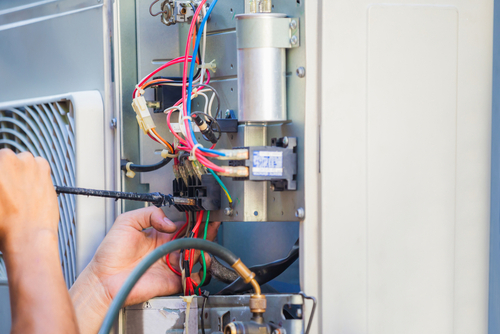Top Tips for Effective Electrical System Troubleshooting
Troubleshooting electric systems requires a methodical strategy, grounded in a thorough understanding of electric concepts and safety procedures. The nuances of reliable troubleshooting prolong past simple technological understanding; recognizing how to record findings and prioritize security can significantly affect end results.
Understand the Basics
Recognizing the essentials of electrical systems is crucial for effective troubleshooting, as a strong structure permits service technicians to detect and deal with problems a lot more efficiently. A thorough understanding of electrical principles, such as voltage, present, resistance, and power, is essential in identifying the origin of troubles. Voltage is the electrical prospective difference that drives current with a circuit, while resistance opposes the circulation of existing, impacting the overall capability of the system.
Experience with circuit components, including resistors, capacitors, diodes, and changes, is also paramount. Each part plays a distinct duty in circuit behavior and can influence efficiency when malfunctioning. Additionally, understanding collection and parallel circuit arrangements is important, as these plans affect the distribution of voltage and existing within the system.
Technicians must be conscious of potential hazards, such as shock and short circuits, to carry out secure troubleshooting practices. By mastering these fundamental principles, specialists enhance their ability to conduct reliable diagnostics and repairs, ultimately leading to improved efficiency and integrity of electrical systems (electrical system troubleshooting).
Gather Necessary Tools
Efficient troubleshooting of electric systems calls for the best set of tools to diagnose and solve problems accurately. Vital devices include a multimeter, which measures voltage, current, and resistance, enabling for accurate analyses of electrical elements.
Additionally, protected hand tools such as screwdrivers, pliers, and cord pole dancers are vital for securely controling electric links. It is also suggested to have a circuit tester on hand to confirm the presence of voltage in electrical outlets and cords. For more complicated systems, a thermal imaging electronic camera can help spot overheating components, suggesting potential failures.

Comply With an Organized Strategy
Having gathered the suitable devices, the following action in fixing electric systems is to follow an organized approach. A systematic strategy makes sure that service technicians can determine faults successfully and accurately, decreasing downtime and protecting against unnecessary repairs.
Begin by evaluating the system's schematic layouts and specs. This includes checking each part methodically, starting from the power resource and working towards the lots.
Make use of testing equipment, address such as multimeters and oscilloscopes, to collect unbiased information concerning voltage, present, and resistance at have a peek at this site numerous points within the system. This empirical proof will certainly assist your troubleshooting initiatives and help to validate or eliminate prospective reasons for failure.
In addition, take into consideration ecological elements that might affect the system's performance, such as temperature level fluctuations or dampness access. An extensive inspection of electrical wiring, connections, and parts will certainly guarantee that all possibilities are accounted for.
Paper Your Findings
Complete documentation is crucial in the repairing procedure of electric systems. Exact records boost the efficiency of identifying recurring problems and assist in interaction among staff member. Each finding ought to be meticulously kept in mind, including symptoms observed, examinations performed, and the results of those examinations. electrical system troubleshooting. This practice not just aids in recognizing the origin of the trouble but also functions as a referral for future troubleshooting initiatives.

Furthermore, preserving a log of parts replaced or repair work executed is important. This information supports stock administration and can aid examine the longevity and reliability of certain components.
Inevitably, the documents procedure need to be extensive yet concise, allowing easy retrieval and evaluation - electrical system troubleshooting. By prioritizing thorough paperwork, specialists can create an important data my response base that not only help in present troubleshooting but additionally equips future maintenance initiatives, consequently enhancing overall system reliability

Prioritize Safety And Security Steps
Acknowledging the intrinsic risks connected with electric systems is essential for guaranteeing safety during troubleshooting. Electrical shock, burns, and tools damages are just a few of the possible dangers that professionals encounter. Prioritizing precaution is not just a legal responsibility but additionally a moral vital that safeguards both the specialist and the surrounding atmosphere.
Before beginning any troubleshooting job, professionals ought to wear proper personal protective equipment (PPE), including protected gloves, security glasses, and flame-resistant clothes. Guaranteeing that the workplace is completely dry and cost-free of clutter can considerably minimize the danger of accidents. Additionally, it is important to de-energize circuits prior to beginning any work, validating that they are not endure making use of a multimeter or voltage tester.
Establishing clear communication protocols with group participants is additionally important; this makes sure that everyone knows possible hazards and the status of the electric system being serviced. Having an emergency situation reaction plan in location can prove invaluable in the event of an occurrence. By focusing on security actions, professionals can effectively minimize dangers and promote a more secure office.
Conclusion
Reliable electrical system troubleshooting counts on a comprehensive understanding of basic principles and a methodical approach. By collecting crucial devices, adhering to systematic assessment techniques, and diligently documenting findings, the fixing process comes to be a lot more reliable and dependable. Prioritizing precaution guarantees the health of people entailed and the honesty of the electrical system. Applying these techniques will boost the repairing experience, bring about quicker resolutions and improved functional performance in electric systems.